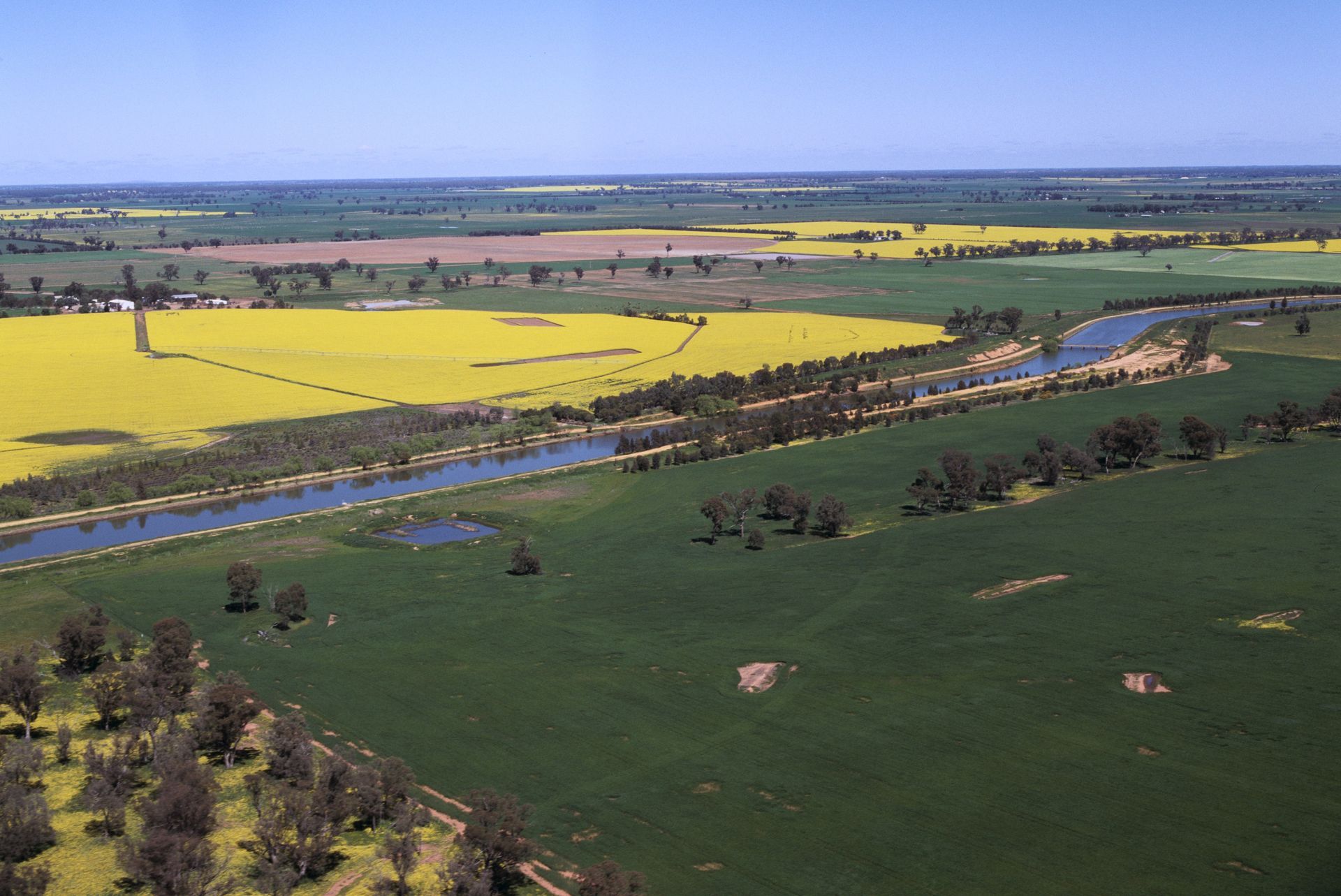30 years of Murray Irrigation feature

22 July 2025
Enduring legacy of ‘benchmark in collaboration’
This year marks 30 years since Murray Irrigation was privatised from a government owned entity, signalling the birth of the company as we know it today. This article explores the Land and Water Management Plans, which were implemented from 1991 to 2010 and continue to have a positive impact on our landscape today.
The implementation of Land and Water Management Plans (LWMPs) across the Murray region remains one of the most significant integrated initiatives in local irrigation history.
Driven out of a collective desire to ensure agricultural and environmental sustainability in the region, this initiative is regarded as a benchmark in collaboration, with governments at all levels working with farmers to achieve productive and environmental outcomes.
It started more than 30 years ago, in the early 1990s, with the formation of the following four Land and Water Management Plan Working Groups:
- Denimein: 53,927ha across 188 farm holdings
- Berriquin: 339,403ha across 1,521 farm holdings
- Cadell: 322,000 ha across 420 farm holdings
- Wakool: 214,449 ha across 352 farm holdings.
These groups were tasked with developing LWMPs within their respective areas, with the key objective of addressing rising groundwater levels and associated salinity.

Funded by landholders, with support from State and Federal Governments, these LWMPs took roughly four years to develop.
Implementing these plans became a major priority for Murray Irrigation (MIL) when the company was privatised in 1995, and assumed the responsibility as the 'Implementation Authority' under its new licence arrangements.
Local farmer and current Murray Irrigation Deputy Chair, Geoff McLeod, who served as the company's Environmental Manager from 1995 to 2001, was heavily involved in the early stages of implementation.
He described the process as “a clear demonstration of how involvement, education and leadership from within can lead to change”.
"MIL supported the LWMP working groups in various ways, including finalisation of the government funding agreement," Mr McLeod said.
"In the early days of its privatisation, the company prepared all the contractual documentation and accepted responsibility for plan implementation.
"This involved establishing an implementation team comprising landholder support and education officers, engineers, administration and overall management."

Local farmer and current Murray Irrigation Deputy Chair, Geoff McLeod, served as the company's Environmental Manager from 1995 to 2001
The on-farm works completed under the LWMPs involved a range of activities including drainage and recycling, storage, establishing perennial vegetation and protecting and enhancing native vegetation.
As a result, each farm became more agriculturally and environmentally sustainable, the benefits of which are still being realised to the current day.
This largescale program of on-farm works was completed in 2010. The total project investment was $356 million, which included $112 million in government funding.
Mr McLeod said the plans were highly successful from the perspective of improving farm water use management and managing surface water runoff from both irrigation and rainfall. Areas of channel seepage were identified and remediated, and a significant number of farm level groundwater pumps were installed.
Murray Irrigation kept a close eye on groundwater levels throughout the implementation process, with monitoring undertaken every six months.
The results of this monitoring indicated over time a steady decline in all areas across the region.
“The groundwater levels fell quite dramatically during the Millennium Drought, and have not risen to any significant amount since, due to improved water management,” Mr McLeod said.
“This has underpinned the long-term productive capacity of the region.
“The community-driven approach was a great illustration of how to do business to achieve on-ground works.”

Such was their success of the LWMP program that Murray Irrigation was invited to present to a range of audiences, at both community and government level, on the approach taken and the positive outcomes achieved.
The scheme even garnered international interest, with Mr McLeod invited to present at the World Water Environment Federation Convention held in Denver Colorado in 1998.
In Mr McLeod's opinion, the success of the LWMP program was underpinned by the following three key factors:
1. Growers understood and acknowledged the importance of the issue being addressed. High groundwater levels posed a significant threat to the productive capacity of the region and hence the profitability and wellbeing of the farming community.
2. Growers were actively involved in developing the plan strategies. Community working groups were established and, with technical support from government agencies (Agriculture and Water), developed the plan detail. Growers were regularly involved via ‘woolshed’ meetings held across the region throughout the four years of plan development.
3. Murray Irrigation brought structure, discipline and strong leadership to the process. As the body responsible for rolling out the program, the company was as equally invested in its success as the community farming groups.

Three decades on, the impact of the hugely successful LWMP initiative is still being felt; and not just in terms of improved water use efficiency.
Funds contributed by landholders that were leftover after the completion of the program are now being used to assist with projects that benefit the community and regional environment, under the guidance of the recently established Riverina Sustainable LWMP.
Successful projects will support the vision to secure protection of the environment, sustainable long term agricultural productivity and social wellbeing of the region.
“From a community perspective the Land and Water Management Plans were highly successful,” Mr McLeod summed up.
“They achieved a whole of farming community focus and commitment to implementing improved water management.”

